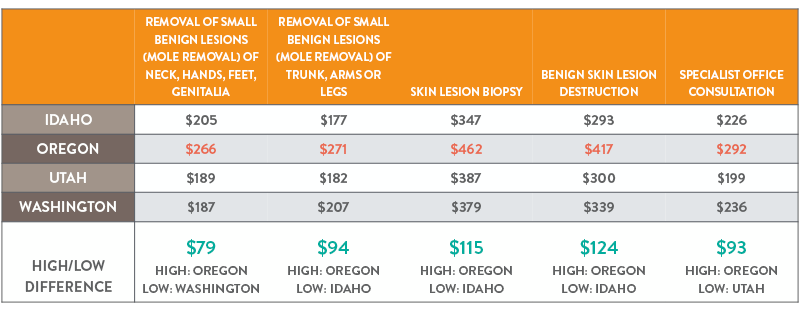HealthSparq confirms summer is the peak season for often-expensive skin treatments
PORTLAND, Ore. – August 27, 2015 – Skin cancer is top of mind for Americans in summer, with searches for dermatology specialist appointments, skin biopsies, and various lesion – or mole – removals increasing 60 percent from March 2015 to July 2015. The data comes from HealthSparq, a company dedicated to empowering now 72 million people with the ability to comparison shop for their health care. According to the American Cancer Society, 3.5 million non-melanoma skin cancers are diagnosed every year, and often-fatal melanoma diagnoses are expected to reach 73,000 in 2015.
It comes as no surprise that as temperatures rise, so does skin cancer awareness and corresponding visits and treatments.
“It’s fascinating to watch how the changing seasons will affect what medical treatments people search and shop for,” said Torben Nielsen, HealthSparq senior vice president of product and strategy. “We’re learning from these trends so we can ensure the more than 72 million people with access to our tools can search for exactly what they need and find it. The changing seasons get people thinking about the need to shop for health care all year.”
Average costs for the aforementioned treatments vary across the country. For example, in the Northwest region and in Utah – where the CDC reports the highest diagnoses for and deaths from skin cancer – Oregon leads with the highest costs for everything from a specialist office consultation to removal of a benign lesion:

HealthSparq has unearthed other insightful health care shopping trends (both seasonal and otherwise) since December 2014, including the fact that expecting moms are the number one users of health care shopping tools. In March, data supported the Vas Madness trend, where men (and their wives) schedule vasectomies to overlap their recovery with the March Madness college basketball tournament.
HealthSparq releases reports on health care shopping trends throughout the year. The trends described are based on search behaviors of the more than 72 million people in the U.S. with health benefits (or 24 percent of the U.S. population) and access to HealthSparq tools.

